A companion unit can help users understand their options, figure out their next step in their shopping journey and get to the products of their interest more quickly.
As part of an initiative to improve the shopping journey on Google, I led the UX design efforts for creating and testing two new companion ad units aimed at helping users discover a broader range of products. These units were specifically designed to address the challenges Gen Z shoppers face in articulating their needs and enhance their preference for visual, interactive shopping experiences.
Challenge: Gen Z shoppers often struggle to describe what they are looking for in words, which can lead to frustration and an incomplete shopping journey. My goal was to create ad units that facilitate product discovery beyond standard Product Listing Ads (PLAs) and extend user engagement with visually rich, intuitive interfaces.
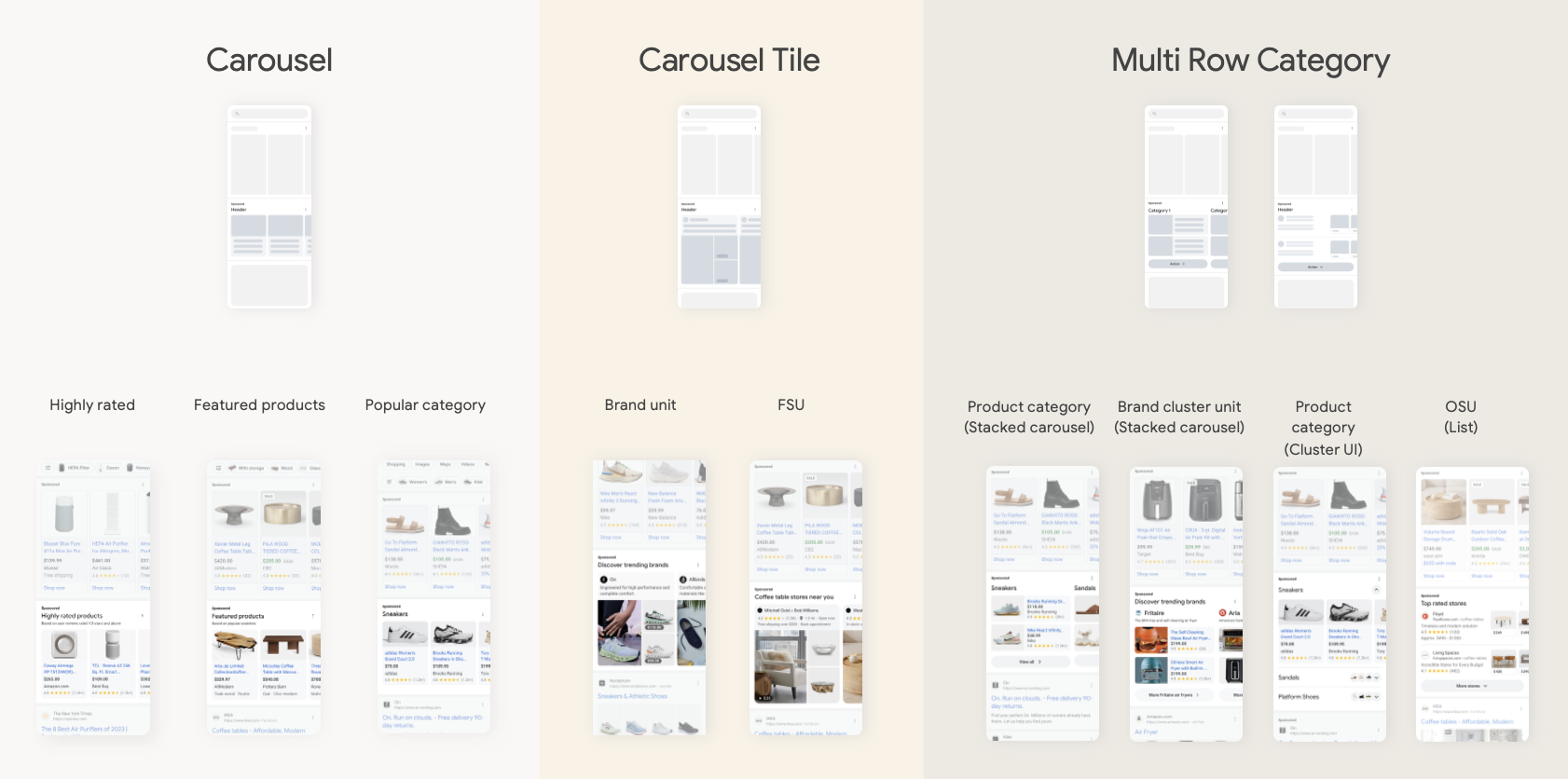
User Insights from Google UXRs: Interviews and surveys were conducted to understand the pain points of Gen Z shoppers. The research highlighted the need for more visual and intuitive ways to browse products, particularly for users who could not easily describe what they were looking for.
Competitive Analysis: They also analyzed the shopping experiences provided by competitors and identified key areas where Google could innovate to improve user engagement and satisfaction.

Hypothesis Development: We developed multiple hypotheses based on user insights. For example, we hypothesized that by initially showing a popular category like athletic shoes and then gradually introducing other categories through a carousel, we could encourage users to explore more products.
Wireframing: I created wireframes for the companion units, outlining the key features such as re-query chips and CTAs. These wireframes were used to facilitate discussions with stakeholders and guide the development of the prototypes.

Arm A Designed a framework where users searching for "shoes" would first see athletic shoes, with other categories like boots, flats, and heels appearing as they swiped through a carousel. This utilized re-query chips to encourage further exploration.
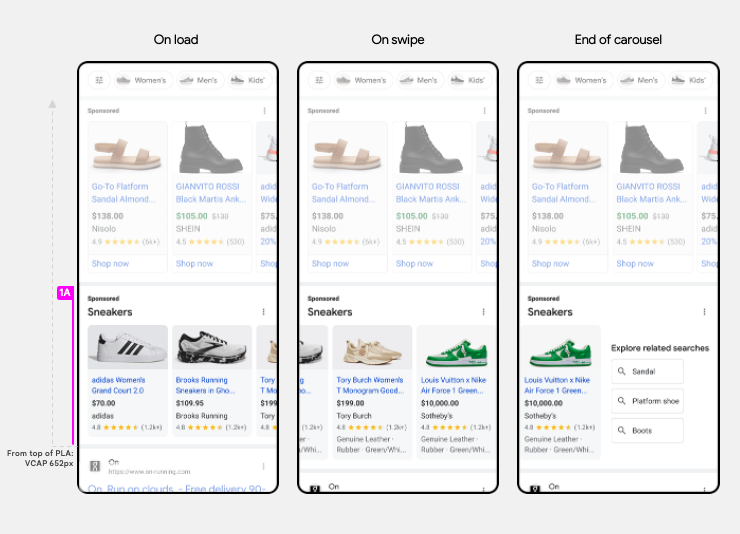
Arm B Added a "Shop Now" CTA to the design to boost click-through rates (CTR).
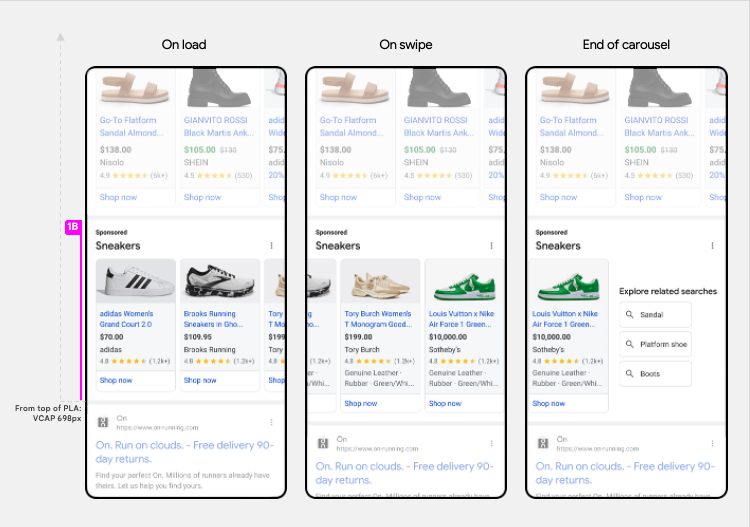
Arm A Utilized a SuperGlue prefab to display a variety of sub-categories with preview thumbnails. The clusters expanded on swipe to reveal more products.
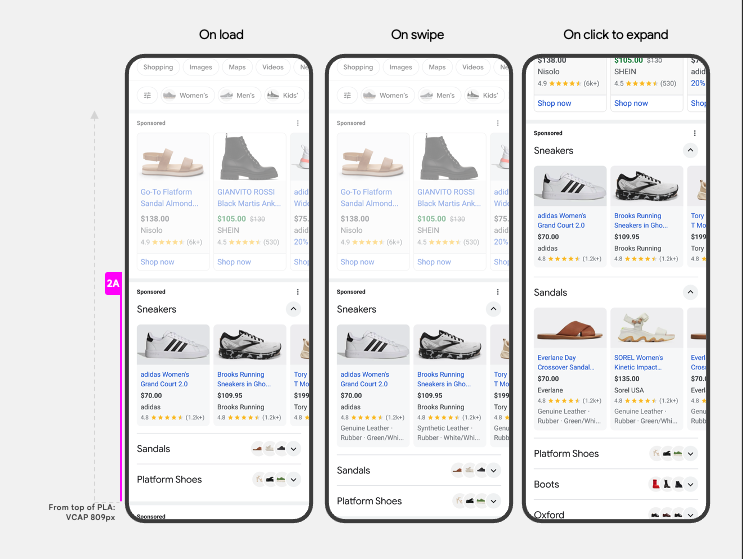
Arm B Focused on maximizing CTR by exposing clusters directly in the carousel, allowing users to swipe through offers with a smooth snapping motion.

I meticulously redlined the designs, marking up spacing, sizing, and alignment to ensure precise implementation by the development team.
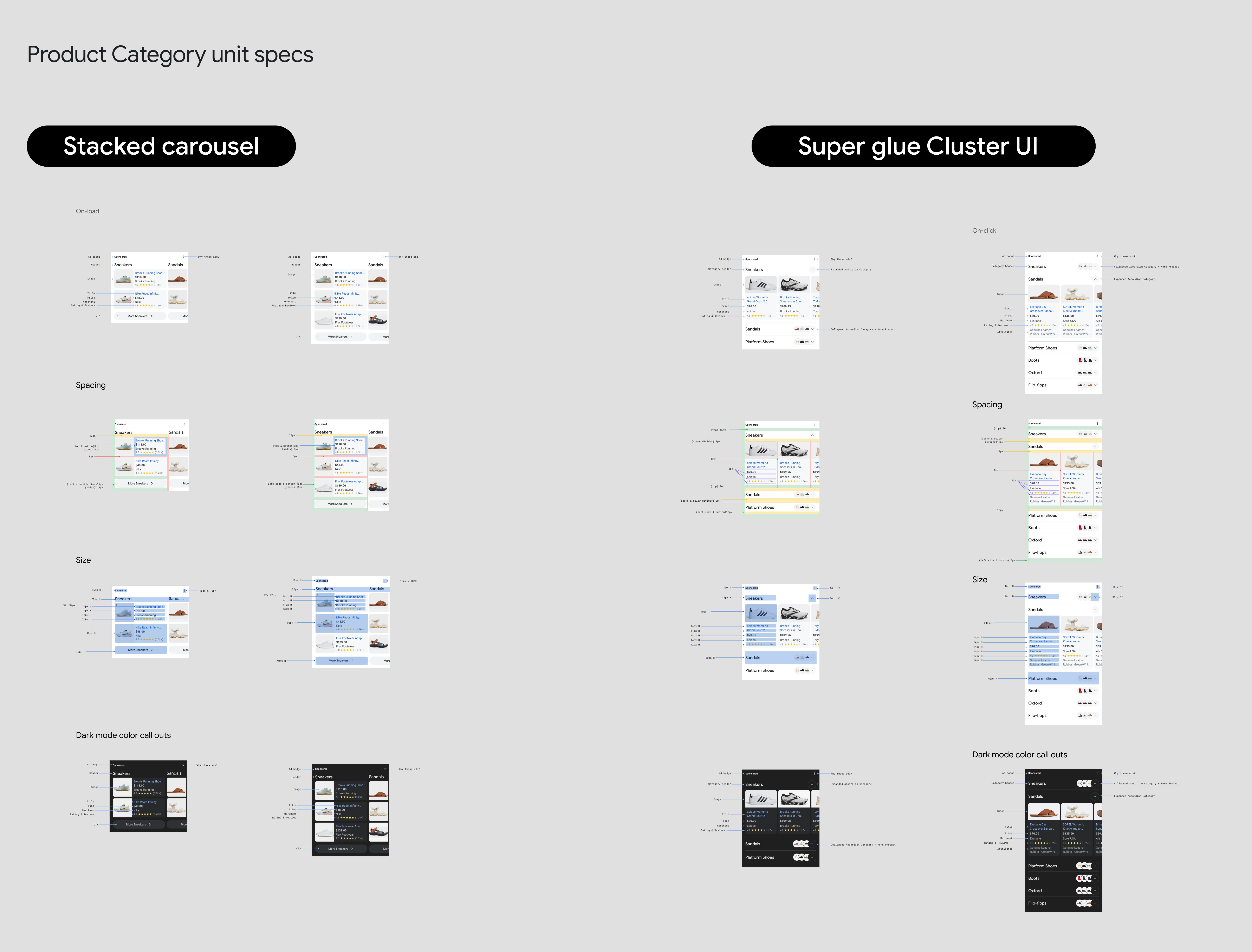
I also redlined additional unit designs for product attributes and highly rated products
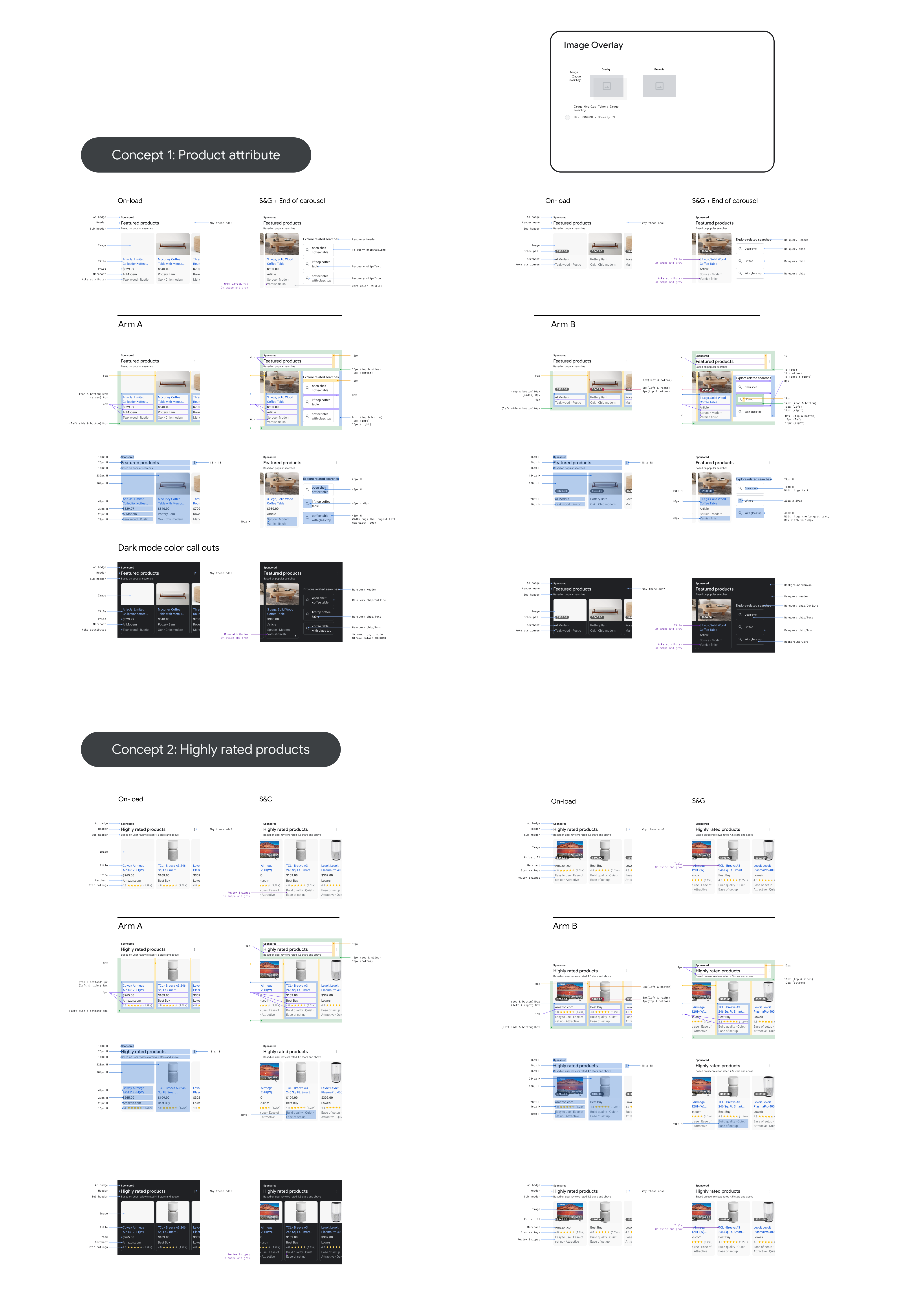
Testing from Google UXRs helped validate our hypotheses and provided valuable insights into user behavior.
Iterative DesignBased on testing feedback, I made iterative improvements to the design, focusing on enhancing visual hierarchy, ease of use, and overall user satisfaction.
Collaboration with Developers:I worked closely with the engineering team to ensure that the design was faithfully translated into the final product. Regular check-ins and design reviews helped maintain the integrity of the UX throughout the development process.
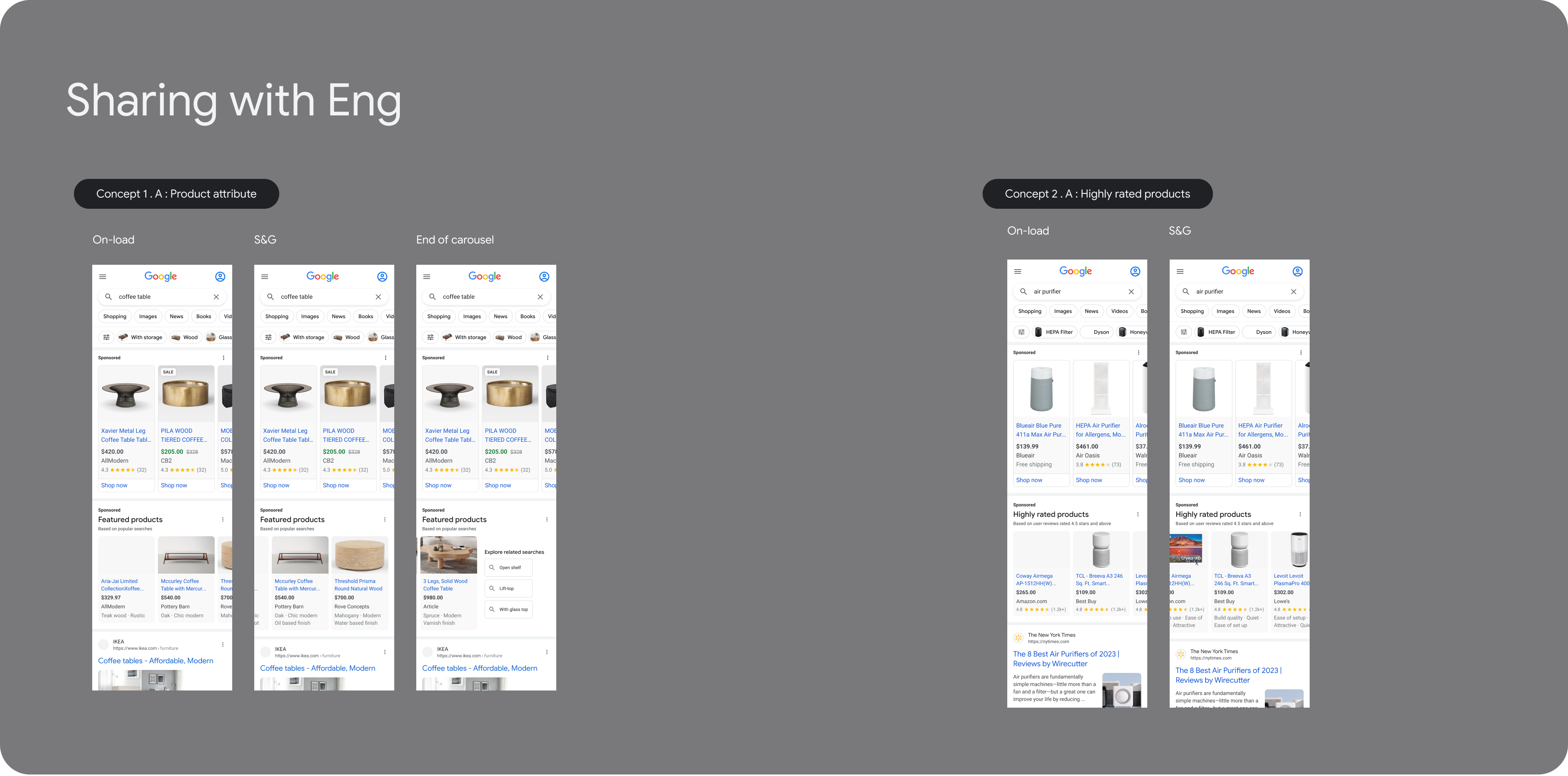
Launch:The final units were successfully launched, showing a significant improvement in user engagement and product discovery compared to traditional PLAs.
The companion units proved highly effective in enhancing the user experience and driving business outcomes. Click-through rates (CTR) for companion units increased by 18%, and users who interacted with them added products to their carts 12% more frequently compared to those who did not. This feature contributed to a 10% rise in purchase rate and a 15% increase in revenue per user (RPU). Additionally, average session duration grew by 14%, reflecting extended shopping journeys and deeper engagement. Customer satisfaction scores (CSAT) improved by 6 points, and feedback indicated that users appreciated the relevance and personalization of the suggestions. Path analysis revealed that users who interacted with companion units explored more diverse product categories, and Gen Z shoppers demonstrated higher interaction rates with trending or niche product recommendations. These results provided valuable insights into user preferences, particularly among Gen Z, which will inform future UX strategies and personalization efforts.
Are you working on something great? I would love to help make it happen! Drop me a note and start your project right now!
Phone +1-360-200-8961
Address Remote, United States